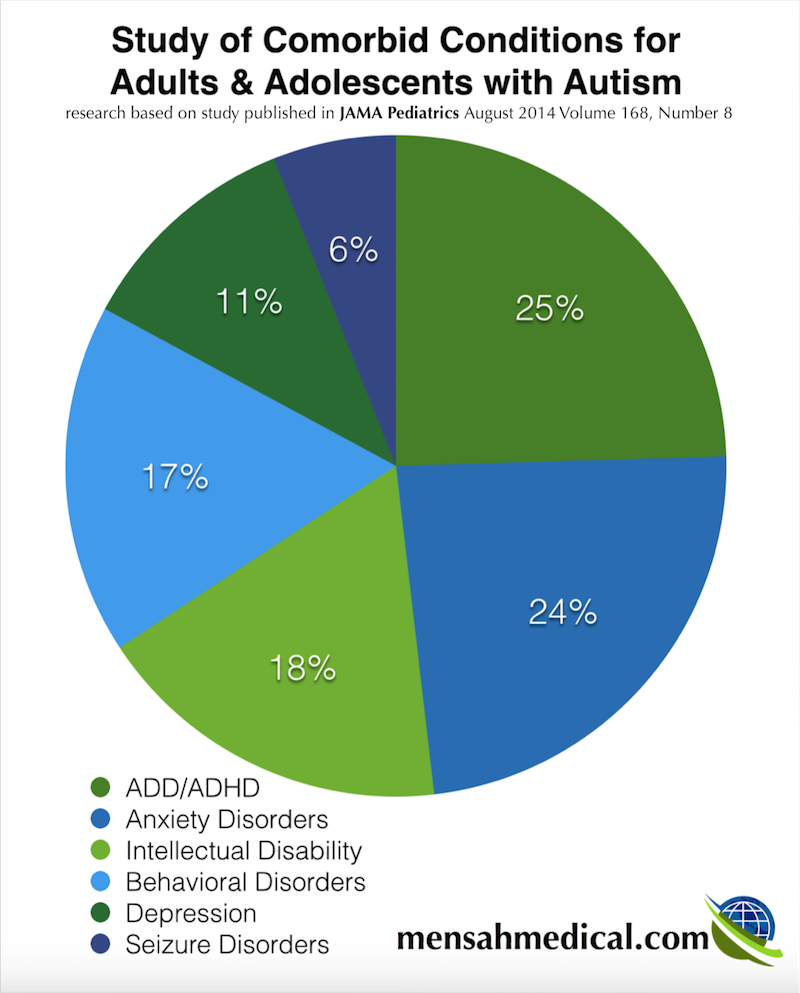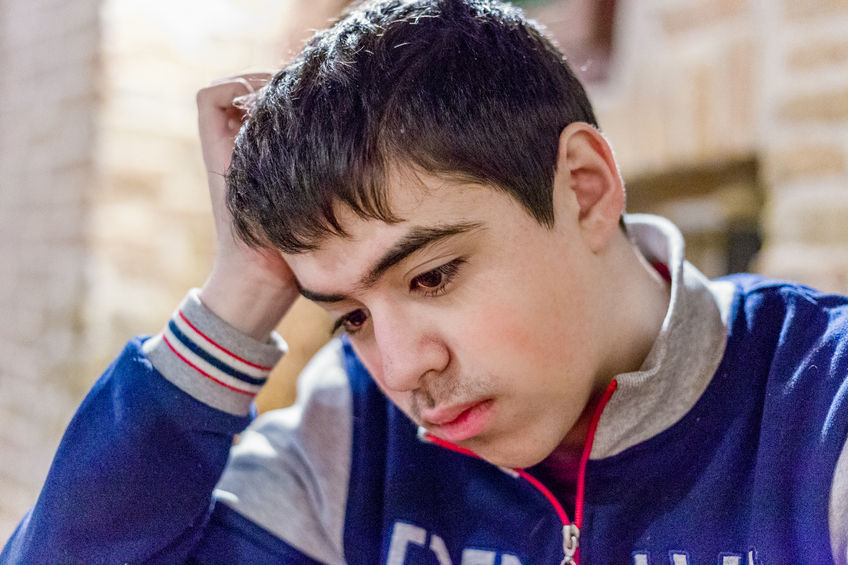Adults and Adolescents with Autism: As patients with autism age and enter adulthood there are many looming questions for caregivers, practitioners, and the general public. Are we doing all we possibly can as a society to assist patients with autism as they age, or are we simply missing the boat?
The general public still knows much too little about the biochemical imbalances and environmental assaults that plague the autism population, and the nutritive therapies necessary to assuage many of their symptoms.
Treating adults and adolescents with autism is expensive, costing at minimum $175 billion U.S. dollars a year in the United States, according to a survey study published in JAMA Pediatrics entitled: “Costs of Autism Spectrum Disorders in the United Kingdom and the United States.” Researchers found that medical costs were much higher for adults than for children. Let’s take a look at these statistics, as well as the new DSM-5 definition of ASD disorders for a better understanding of treatment for adults and adolescents with autism from a biochemical standpoint.
So what is going on in our adult autism population?
According to JAMA pediatrics study, the cost rises when the ASD patient is diagnosed with an intellectual disability (ID). For adults in the autism community, the cost of assisted living is the highest, but medical costs are also very high.
Research Survey of Comorbid Conditions for Adults and Adolescents with Autism
In addition, this study showed alarming statistics on the health status of adolescent and adult patients with autism.

According to the study, 60% surveyed had at least two health or mental health conditions in addition to their autism spectrum disorder diagnosis, and about 75% took prescription medication regularly for a health or mental health issue.
- ADD/ADHD (53%)
- Anxiety Disorders (51%)
- Intellectual Disability (38%)
- Behavioral or conduct problems (37%)
- Depression (24%)
- Seizure disorder (13%)
The study also noted that aggression and self-injury were commonly reported concerns by their participants, and that adolescents and adults exhibited more intense, more complex, and more established behaviors.
Carefully Defining Adults and Adolescents with Autism
Now according to the DSM-5, autism spectrum disorders cover a wide range of disabilities and diagnostic conditions. Much of the statistical data we see include patients who are diagnosed with Asperger syndrome and conditions like Pervasive Developmental Disorder-Not Otherwise Specified (PDD-NOS). So although we are going to talk about autism research statistics, I want you to understand that these statistics don’t represent the autism population that we treat, as our criteria is a much more narrow one that is represented by the DSM-5. Those studies are using ASD as an umbrella term that incorporates disorders that are not autism. We define Asperger syndrome as a very different genetic, epigenetic, and biochemical creature. Asperger syndrome is a condition with many different cognitive capacities.
In short, we see Asperger syndrome as a specific biochemical condition that is much different than autism. This means that in our clinic, the treatment protocol for autism/PDD-NOS is not the same as the treatment protocol for Asperger syndrome. This is because we see a very different brain structure and chemical imbalance going on. Untreated autistic individuals succumb to the neurodegenerative process. Untreated Aspergian individuals, on the other hand, will usually progress extremely well academically and may end up being your boss someday. But they may not understand the nuances of personal needs and lack social skills.
Behavioral Challenges in Adults and Adolescents with Autism
In general, mental health issues affect a patient’s behavior. Compound this with an autism diagnosis, and you will see heightened behavioral issues. Autistic adults with behavioral challenges pose a significant problem for caregivers, medical staff, and immediate family members. Weight, height, and physical strength are all factors that make restraint very difficult and in many cases, dangerous for those that care for adults and adolescents with autism and mental health issues. Everything you see in biochemical imbalances is far more sensitized in autism, as we define it in our clinic, than any other condition we treat at Mensah Medical. Autism is several-fold more intense.
A Drexel University study reports, “While not a defining characteristic of autism, challenging behavior such as aggression and self-injury are commonly reported concerns. With adolescents and adults, challenging behavior is often more intense, more complex, and more established. Fear of injury, the temporary exacerbation of problem behavior, and the risk of legal action are common concerns for professionals and caregivers attempting to provide effective intervention.”
Thoughts on Who Killed Alex Spourdalakis
There is much critical analysis on the treatment of adults and adolescents with autism in the U.K. as well as the U.S. The Autism Media Channel recently released a documentary DVD on the life and tragic death of Alex Spourdalakis a Chicago area teen with severe non-verbal autism. This young man was quietly coping with his condition at home in his Chicago suburb under the care of his mother, Dorothy, and his godmother until the age of 14. At this time he began to have uncontrollable fits of violence. It took 6-8 police officers to transport him to the ER, as he was over 6 feet tall and weighed over 200 pounds. “He would kick, thrash, bite,” reported River Grove Police Chief Roger Loni in a televised CBS news this morning report in 2013.
According to the documentary Who Killed Alex Spourdalakis? Alex was prescribed over 25 psychotropic drugs in the course of his treatment and only 2 were approved for autism. Some of the medications he was prescribed included: Zoloft, Haldol, clonidine, Ativan, and paliperidone.
This is a troubling detail in Alex’s story that really struck me. I often tell the families of the autistic adults and adolescents we treat that drug therapy will blunt an autistic patient’s cognitive and emotional processing, but it will not improve the underlying cause of their mood disorder.
In the film as well as news reports, the public eventually learns that Dorothy reported that she believed her son’s violent outbursts were triggered by severe gastric pain. With the help of the police department, her son was transported to the ER and reportedly put in 4-point restraints for 12 days. A gastroenterologist confirmed that he had numerous ulcers in his stomach. When the mother and caregiver could not find a facility that would treat her son, Alex, they took matters into their own hands. They murdered him. Dorothy told authorities that his behavior was so out of control she felt she had no other recourse.
She was probably not aware that there were additional beneficial medical approaches that could have helped her son.
Treatment for Behavioral Issues in Adults and Adolescents with Autism
If you are a caregiver for an adult with autism, treatment for severe behavioral issues is possible. Mensah Medical has adult and adolescent patients who have come to us after the age of 16 for their initial treatment. Our oldest autistic patients are in their 50s.
There are many common behavioral symptoms in adults and adolescents with autism that we typically see in our new patients. Many have violent episodes of rage, severe anxiety, depression, episodes of lashing out, and emotional instability. Stimming in adolescents can morph into physical destruction. It becomes biting, kicking, and beating of a family member, or anyone in the immediate environment.
Our treatment protocol in the adult and adolescent autism population as we define it at Mensah Medical, will have a different outcome than what we typically see in the autistic children we treat.
Caregivers seeking treatment need to understand that adults and adolescents with autism that did not receive nutritive therapy treatment as children and have suffered a cognitive decline are not reversible in our treatment protocol. True autism, as we define it at Mensah Medical is neurodegenerative. This is not present in the Asperger population we see, or in the PDD-NOS patients under our care. We may not be able to fix cognitive issues in an adult or adolescent with autism, but we can help with issues of anxiety, mood swings, rage, and various other debilitating mood disorders that cause behavioral issues in these patients. We can also stop the progression of neurodegeneration.
Avoiding Compliance Issues for Adults and Adolescents with Autism
A compliant adult or adolescent with autism will see improvements in anxiety in a matter of days to weeks. In terms of rage and other behavioral challenges, it may take weeks to months to show improvements depending on the underlying cause and comorbid biochemical conditions present. Long-term prognosis is very good for our patients, even those with comorbid conditions. Many family members have reported much more manageable behaviors which decreases family stress tremendously. Adults in compliance with their nutrient therapy will typically not exhibit any further cognitive decline.
Behavior is one of the pieces that fall into place quite readily when treating an adolescent with autism. Family members will report decreased anxiety and decreased irritate behavior. Incidents of rage and moments of lashing out will gradually wane over time.
But compliance has to be there. It is the biggest prognostic indicator of success. It is best manifested when the entire family is supportively involved. The older patient with autism might not want to swallow the supplements. Powder formulations are one way to get around that. They can be sprinkled into foods. There are also liquid formulations. Patients need to contact Mensah Medical to discuss their options and concerns. We have dedicated staff with many years of experience that can help noncompliant patients get the nutrients they need.
In our practice, we have discovered that autism chemistries are similar underneath. We typically see zinc deficiency, copper toxicity, vitamin D deficiency, challenges with vitamin B6 processing, and severe oxidative stress. In autism, these imbalances are far more severe than in mental health disorders like schizophrenia. We also see many digestive issues. We see poor absorption and malnutrition, hypoglycemia, dysbiosis, inflamed bowel, constipation, and diarrhea. These are all elements that can negatively affect behavior in patients with autism.
The long-term prognosis for nutrient therapy is very good in our adult and adolescent population diagnosed with autism. Sensory issues tend to change over time with prolonged treatment. In general food preferences often have to do with hypoglycemia, which causes a patient to crave energy sources like carbohydrates and quick sugar fixes.
Patients with yeast overgrowth who eat carbs and starches like pasta, bread, and sweet sugars create positive reinforcement for the yeast by way of a morphine-like reward. In this cycle, the yeast are manipulating the patient with overgrowth issues to feed them. Consequently, unstable moods and behaviors are often times a hallmark of yeast toxicity. Therapies such as oil of oregano and caprylic acid are beneficial for their antibacterial, antiviral, anti-fungal, and anti-inflammatory properties. But often times more powerful agents may be necessary. We prescribe anti-fungal agents to our patients, and some may require prescription-grade pharmaceutical therapies to irradiate yeast.
These are all part of the issues we address at Mensah Medical when we treat adults and adolescents with autism, as well as part of the protocols we prescribe.
Albert Mensah, MD
 As a physician in this specialized field since 2005, Dr. Mensah, board certified in integrative pediatrics by the American Association of Integrative Medicine, has treated over 3,000 patients with advanced targeted nutrient therapy. He serves on the board at Walsh Research Institute and serves as a clinical instructor for WRI’s international doctor training programs around the world. Dr. Albert Mensah received his undergraduate degree from Northwestern University (Evanston, Illinois) and his medical degree from Finch University of Health Sciences-Chicago Medical School. Dr. Mensah’s residency was in Family Medicine at Swedish Covenant Hospital (Chicago). Following residency, he completed additional fellowship training in academic development at JHS Cook County Hospital (Chicago). From 2005 to 2008, Dr. Mensah treated patients at the former Pfeiffer Treatment Center, a not-for-profit organization and outpatient clinic specializing in the treatment of biochemical imbalances including children with autism. Prior to joining Pfeiffer, Dr. Mensah was a physician at Melrose Park Clinic in Illinois. Dr. Mensah co-founded Mensah Medical in 2008 with Dr. Judith Bowman.
As a physician in this specialized field since 2005, Dr. Mensah, board certified in integrative pediatrics by the American Association of Integrative Medicine, has treated over 3,000 patients with advanced targeted nutrient therapy. He serves on the board at Walsh Research Institute and serves as a clinical instructor for WRI’s international doctor training programs around the world. Dr. Albert Mensah received his undergraduate degree from Northwestern University (Evanston, Illinois) and his medical degree from Finch University of Health Sciences-Chicago Medical School. Dr. Mensah’s residency was in Family Medicine at Swedish Covenant Hospital (Chicago). Following residency, he completed additional fellowship training in academic development at JHS Cook County Hospital (Chicago). From 2005 to 2008, Dr. Mensah treated patients at the former Pfeiffer Treatment Center, a not-for-profit organization and outpatient clinic specializing in the treatment of biochemical imbalances including children with autism. Prior to joining Pfeiffer, Dr. Mensah was a physician at Melrose Park Clinic in Illinois. Dr. Mensah co-founded Mensah Medical in 2008 with Dr. Judith Bowman.



